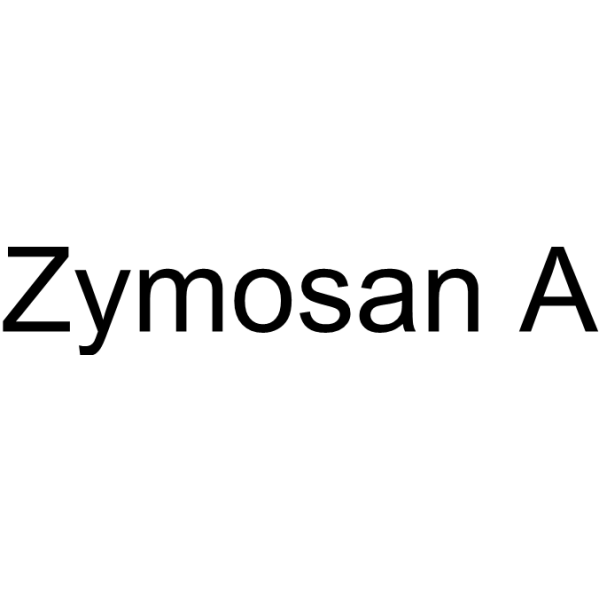酵母聚糖 A

酵母聚糖 A结构式

|
常用名 | 酵母聚糖 A | 英文名 | ZYMOSAN A |
|---|---|---|---|---|
| CAS号 | 58856-93-2 | 分子量 | N/A | |
| 密度 | N/A | 沸点 | N/A | |
| 分子式 | N/A | 熔点 | N/A | |
| MSDS | 美版 | 闪点 | N/A |
酵母聚糖 A用途可通过激活备解素(properdin)系统而增强机体特定防御作用。它可用于对细胞吞噬作用的测定试剂和吞噬调理剂。此外,它与血清中天然抗体结合,能灭活补体,形成酵母聚糖(zymosan)-抗体(antibody)-补体(complement)的复合物,简称ZAC142,这简称中的“142”系指补体的三种成分,这ZAC142能分裂补体第三种成分、使其失活。另外酵母聚糖也被用于备解素的提纯和检测。 |
| 中文名 | 酵母聚糖 |
|---|---|
| 英文名 | Zymosan |
| 英文别名 | 更多 |
| 外观性状 | 灰白色到浅棕色 粉末 |
|---|---|
| 储存条件 | 2-8℃ |
| 稳定性 | 常温常压下稳定,避免接触水 |
| 更多 | 1. 性状:未确定 2. 密度(g/cm3 25/4℃):未确定 3. 相对蒸汽密度(g/mL,空气=1):未确定 4. 熔点(ºC):未确定 5. 沸点(ºC 3mmHg):未确定 6. 沸点(ºC,5.2kPa):未确定 7. 折射率(°):未确定 8. 闪点(℃):未确定 9. 比旋光度(º):未确定 10. 自燃点或引燃温度(ºC):未确定 11. 蒸气压(kPa,25ºC):未确定 12. 饱和蒸气压(kPa,60ºC):未确定 13. 燃烧热(KJ/mol):未确定 14. 临界温度(ºC):未确定 15. 临界压力(KPa):未确定 16. 油水(辛醇/水)分配系数的对数值(25℃):未确定 17. 爆炸上限(%,V/V):未确定 18. 爆炸下限(%,V/V):未确定 19. 溶解性(mg/mL):水:未确定 |
| 个人防护装备 | Eyeshields;Gloves;type N95 (US);type P1 (EN143) respirator filter |
|---|---|
| 危害码 (欧洲) | Xi |
| 风险声明 (欧洲) | 36/37/38 |
| 安全声明 (欧洲) | S22;S24/25 |
| 危险品运输编码 | NONH for all modes of transport |
| WGK德国 | 3.0 |
|
Functional assessment of mouse complement pathway activities and quantification of C3b/C3c/iC3b in an experimental model of mouse renal ischaemia/reperfusion injury
J. Immunol. Methods 419 , 25-34, (2015) The complement system is an essential component of our innate immunity, both for the protection against infections and for proper handling of dying cells. However, the complement system can also contr... |
|
|
A Metalloproteinase Mirolysin of Tannerella forsythia Inhibits All Pathways of the Complement System.
J. Immunol. 195 , 2231-40, (2015) Recent reports focusing on virulence factors of periodontal pathogens implicated proteinases as major determinants of remarkable pathogenicity of these species, with special emphasis on their capacity... |
|
|
Toll-Like Receptors and Dectin-1, a C-Type Lectin Receptor, Trigger Divergent Functions in CNS Macrophages.
J. Neurosci. 35 , 9966-76, (2015) Spinal cord injury (SCI) activates macrophages, endowing them with both reparative and pathological functions. The mechanisms responsible for these divergent functions are unknown but are likely contr... |
| EINECS 232-725-5 |
| MFCD00082157 |


